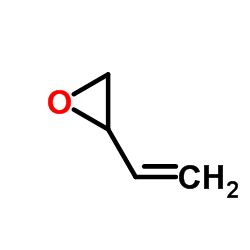Dose responses for DNA adduct formation in tissues of rats and mice exposed by inhalation to low concentrations of 1,3-[2,3-[(14)C]-butadiene.
Ewan D Booth, Joanne D Kilgour, Stephen A Robinson, William P Watson
Index: Chem. Biol. Interact. 147(2) , 195-211, (2004)
Full Text: HTML
Abstract
Male Sprague-Dawley rats and B6C3F1 mice were exposed to either a single 6h or a multiple (5) daily (6h) nose-only dose of 1,3-[2,3-(14)C]-butadiene at exposure concentrations of nominally 1, 5 or 20 ppm. The aim was to compare the results with those from a similar previous study at 200 ppm. DNA isolated from liver, lung and testis of exposed rats and mice was analysed for the presence of butadiene related adducts, especially the N7-guanine adducts. Total radioactivity present in the DNA from liver, lung and testis was quantified and indicated more covalent binding of radioactivity for mouse tissue DNA than rat tissue DNA. Following release of the depurinating DNA adducts by neutral thermal hydrolysis, the liberated depurinated DNA adducts were measured by reverse phase HPLC coupled with liquid scintillation counting. The guanine adduct G4, assigned as N7-(2,3,4-trihydroxybutyl)- guanine, was the major adduct measured in liver, lung and testis DNA in both rats and mice. Higher levels of G4 were detected in all mouse tissues compared with rat tissue. The dose-response relationship for the formation of adduct G4 was approximately linear for all tissues studied for both rats and mice exposed in the 1-20 ppm range. The formation of G4 in liver tissue was about three times more effective for mouse than rat in this exposure range. Average levels of adduct G4 measured in liver DNA of rats and mice exposed to 5 x 6 h 1, 5 and 20 ppm 1,3-[2,3-(14)C]-butadiene were, respectively, for rats: 0.79 +/- 0.30, 2.90 +/- 1.19, 16.35 +/- 4.8 adducts/10(8) nucleotides and for mice: 2.23 +/- 0.71, 12.24 +/- 2.15, 48.63 +/- 12.61 adducts/10(8) nucleotides. For lung DNA the corresponding values were for rats: 1.02 +/- 0.44, 3.12 +/- 1.06, 17.02 +/- 4.07 adducts/10(8) nucleotides, and for mice: 3.28 +/- 0.32, 14.04 +/- 1.55, 42.47 +/- 13.12 adducts/10(8) nucleotides. Limited comparative data showed that the levels of adduct G4 formed in liver and lung DNA of mice exposed to a single exposure to butadiene in the present 20 ppm study and earlier 200 ppm study were approximately directly proportional across dose, but this was not observed in the case of rats. From the available evidence it is most likely that adduct G4 was formed from a specific isomer of the diol-epoxide metabolite, 3,4-epoxy-1,2-butanediol rather than the diepoxide, 1,2,3,4-diepoxybutane. Another adduct G3, possibly a diastereomer of N7-(2,3,4-trihydroxybutyl)-guanine or most likely the regioisomer N7-(1-hydroxymethyl-2,3-dihydroxypropyl)-guanine, was also detected in DNA of mouse tissues but was essentially absent in DNA from rat tissue. Qualitatively similar profiles of adducts were observed following exposures to butadiene in the present 20 ppm study and the previous 200 ppm study. Overall the DNA adduct levels measured in tissues of both rats and mice were very low. The differences in the profiles and quantity of adducts seen between mice and rats were considered insufficient to explain the large difference in carcinogenic potency of butadiene to mice compared with rats.
Related Compounds
| Structure | Name/CAS No. | Molecular Formula | Articles |
|---|---|---|---|
 |
2-Vinyloxirane
CAS:930-22-3 |
C4H6O |
|
In vivo doses of butadiene epoxides as estimated from in vit...
2014-12-15 [Toxicol. Appl. Pharmacol. 281(3) , 276-84, (2014)] |
|
Mutagenicity of stereochemical configurations of 1,2-epoxybu...
2007-03-20 [Chem. Biol. Interact. 166(1-3) , 207-18, (2007)] |
|
Identification of covalent modifications in P450 2E1 by 1,2-...
2007-03-20 [Chem. Biol. Interact. 166(1-3) , 170-5, (2007)] |
|
Reactive metabolites of 1,3-butadiene: DNA and hemoglobin ad...
2001-01-01 [Adv. Exp. Med. Biol. 500 , 93-103, (2001)] |
|
A novel DNA adduct, originating from 1,2-epoxy-3,4-butanedio...
2001-06-01 [Chem. Biol. Interact. 135-136 , 687-93, (2001)] |